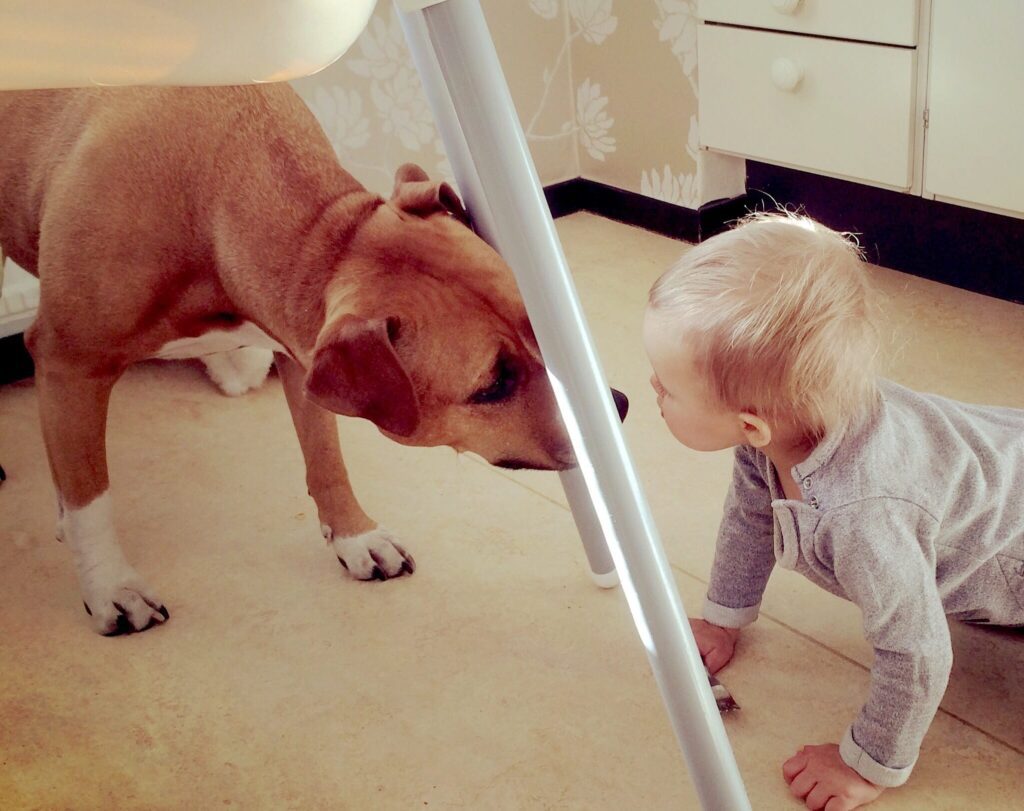Preventing Dog Bites

According to the American Veterinary Medical Association, every year about 4.7 million people are bitten by dogs. Among these, most are children. If you area a parent, you can reduce this risk by teaching your children smart behavior around dogs. Laying the groundwork early will help you prevent dog bites and keep your family (and your dog) safe. Here are some basics.
- Never leave a young child unsupervised with a dog. This goes for any dog, including your family dog. Until you are 100% certain that your child is old enough to understand dog behavior and demonstrate good judgment, you should oversee all contact.
- Never interact with a loose dog. If your child sees a dog running in the neighborhood, they should not approach it. Exercise your judgment as to whether you should approach the dog to find the owner or contact Animal Control.
- An eating or sleeping dog is off limits. This is the dog’s personal time. Leave him alone.
- If a dog wants to be alone, let him. If a dog removes himself from a situation by going into his crate or another room, respect his space.
- No teasing. This goes for withholding toys and treats, and pulling tails and ears.
- No “roughhousing” with the dog. Don’t let your children climb on, drag around or wrestle with the dog. No yelling in the dog’s face.
- Greet dogs correctly. When approaching a dog you do not know, always ask the owner if it’s okay to pet the dog. If the owner says it’s ok, proceed to greet the dog this way:
- No direct eye contact (eye contact can be interpreted as aggression)
- Approach the dog from the side (never from above as this can be interpreted as dominance)
- Let the dog approach and sniff you first (don’t force yourself on the dog)
- If the dog looks at ease and willing, pet him on the side of his face, body or back (not his ears or tail)
- Recognize signs that dog is anxious/fearful and leave him alone:
- Cowering
- Licking lips (when no food is nearby)
- Panting (when not overheated)
- Furrowed brow
- Walking in slow motion
- Yawning (when they’re not tired)
- Hyper-vigilance/pacing
- Trying to move away
- Recognize a dog’s basic body language. Teach your kids at a level they can understand now, and reinforce it as they grow.
- Teach your child to “be a tree”. If your child ever feels uncomfortable or threatened by a dog’s attention, they should assume a posture of head and eyes down, hands at sides, and quiet, like a tree. This will discourage a dog from engaging.
Most dogs truly love children, and this bond can be one of the most formative of a young person’s life. By educating and reinforcing respect for your four-legged companions, you will ensure that your child’s experience is positive, loving and safe.
The Michelson Found Animals Foundation’s mission of saving pets and enriching lives is made possible by the generous contributions of Dr. Gary Michelson and Alya Michelson.


